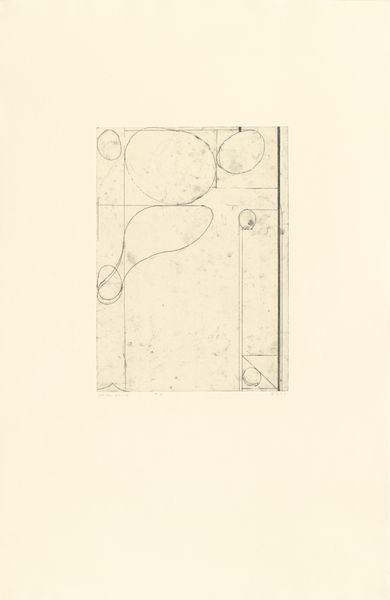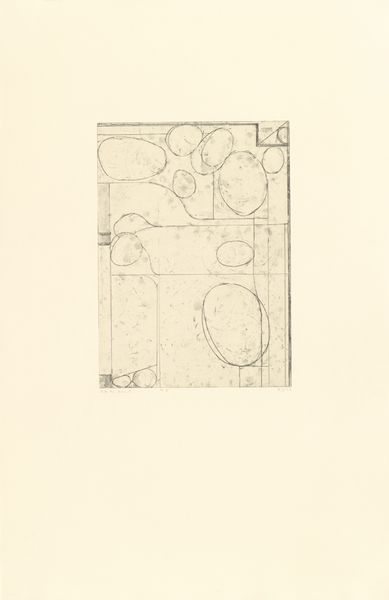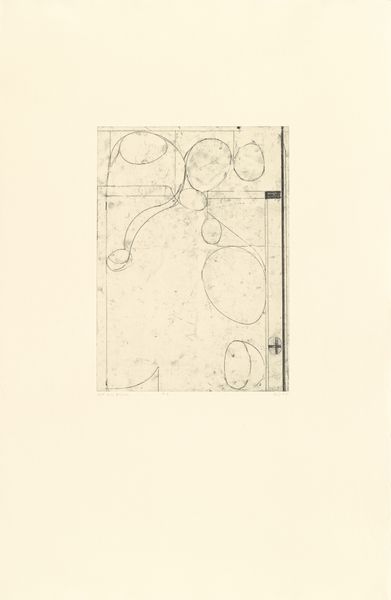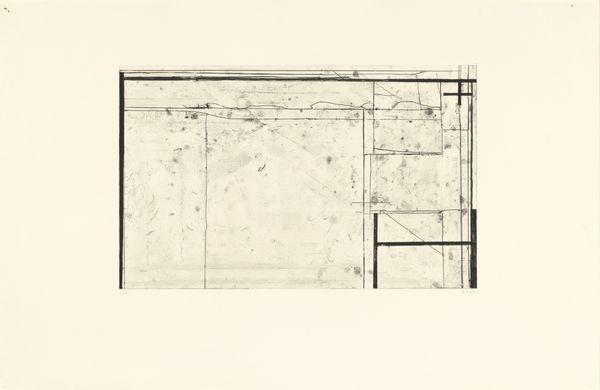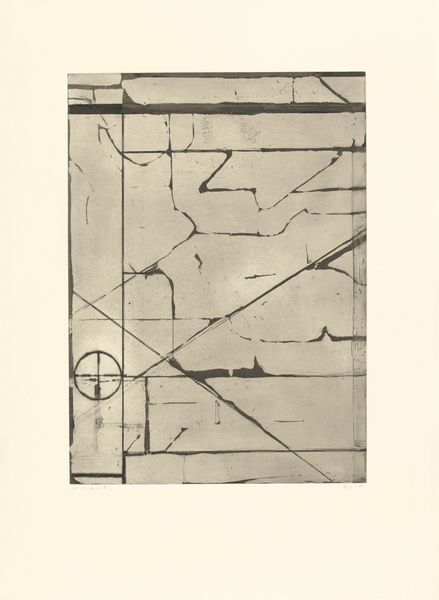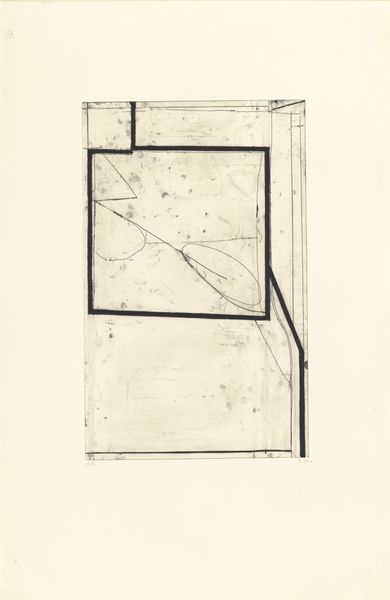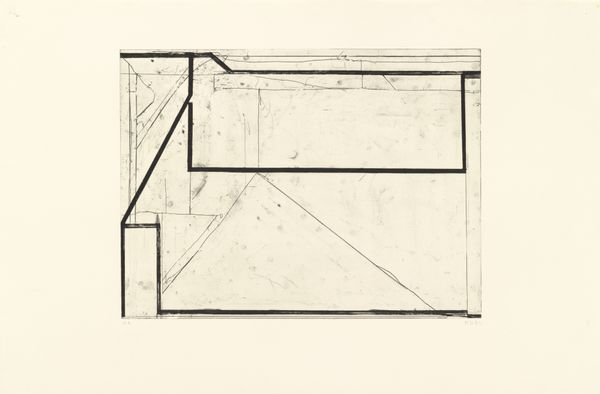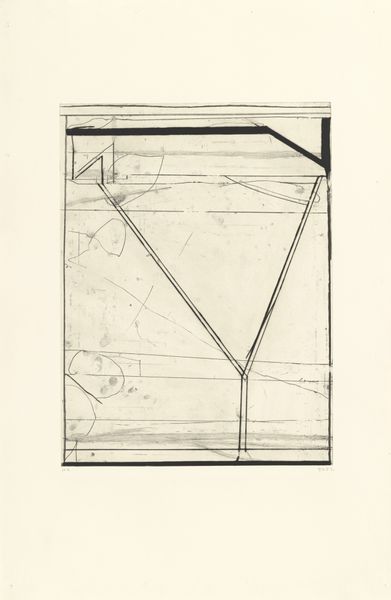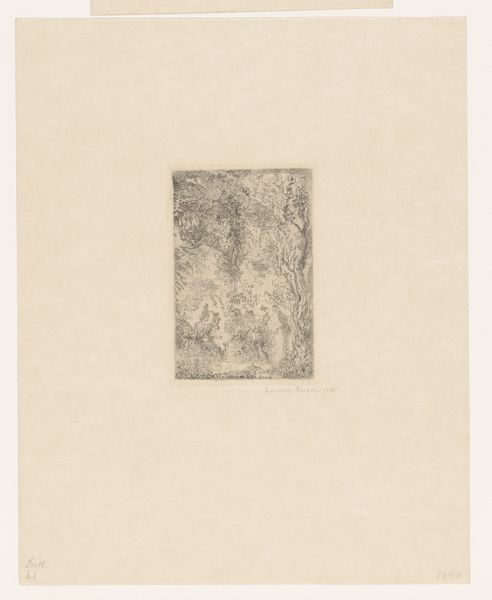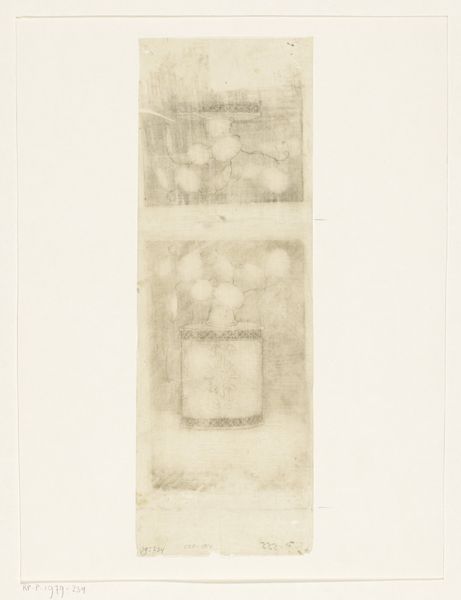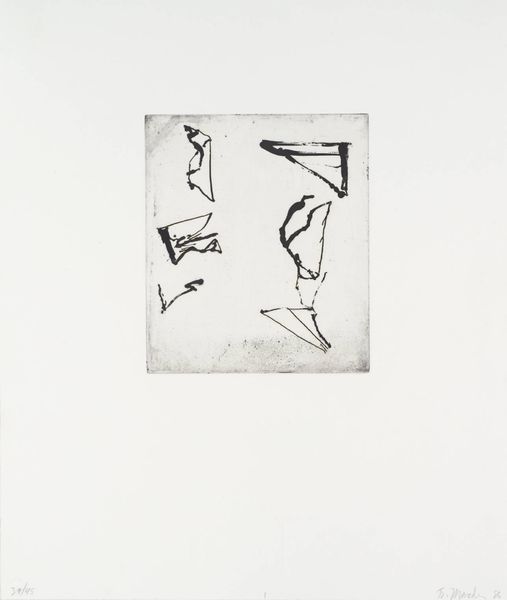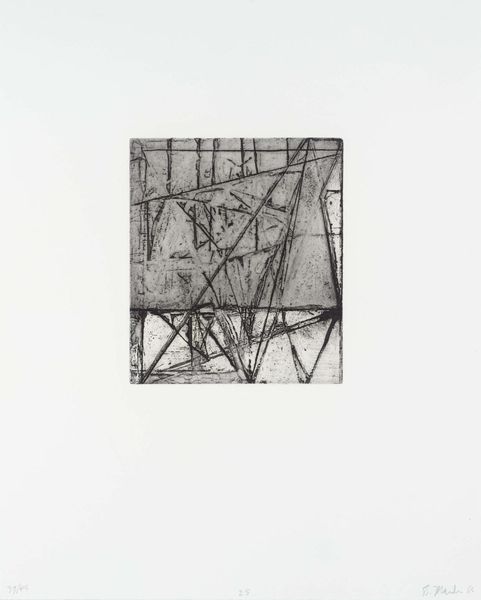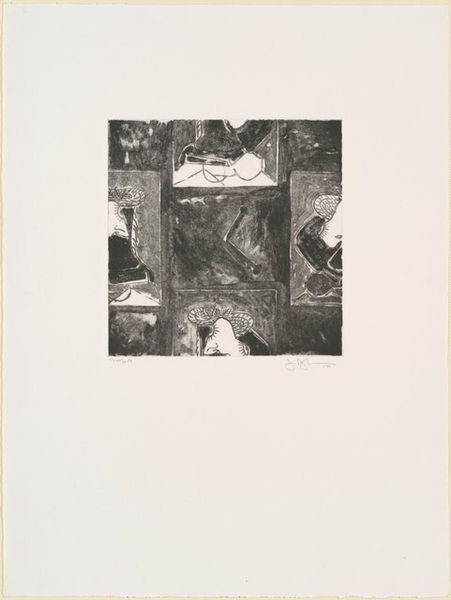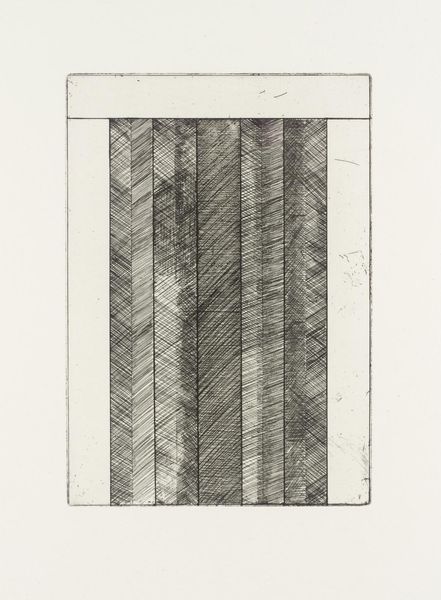
# print
#
pencil sketch
#
bay-area-figurative-movement
#
geometric
#
abstraction
#
line
Dimensions: image: 27.9 x 20.3 cm (11 x 8 in.) sheet: 101.6 x 66 cm (40 x 26 in.)
Copyright: National Gallery of Art: CC0 1.0
Curator: This is "Number 1," a print created by Richard Diebenkorn in 1978. It's a piece dominated by geometric shapes, primarily circles and rectangles. Editor: My first impression is how delicately balanced the whole composition feels, despite the stark geometry. There's a lightness and almost… musical quality to it, wouldn’t you agree? It feels so spare. Curator: Yes, it's true Diebenkorn balances intuition and order. He said he wants his lines to feel as if they just happened; he wanted them to have a sense of inevitability. What intrigues me is how abstraction can be a powerful way to convey social critique. It speaks of power structures in ways other artistic styles may not accomplish. Editor: It’s interesting that you brought up power, because I almost sense vulnerability in it. Considering it was made in 1978, a time when American society was struggling, I wonder about its underlying mood. Curator: Well, art is rarely created in a vacuum. Artists absorb their environment like a sponge, expressing unspoken truths or fears, which sometimes challenge established beliefs. Look closely, for instance, at how rigid those vertical lines seem, juxtaposed against free-flowing forms, as though inviting discourse between societal expectations. Editor: It feels quite open, that invites interpretation. We all have our own lens for understanding these lines and figures! Do you feel a similar sense? Curator: It’s true—everyone sees and experiences it differently, which can also change throughout time. Editor: I’m struck by this feeling of provisionality, perhaps inherent in the style. The sense is more dreamlike and intimate, rather than fixed. But is this an access point to collective experiences? Curator: Maybe that sense of vulnerability you picked up on…maybe it's not a personal vulnerability but a commentary on the world that felt exposed. And then a sense of hopeful resolution because that final line hasn’t been drawn. Editor: Yes, it could imply infinite paths to imagine alternatives! Thanks for a refreshing way of considering abstractions.
Comments
No comments
Be the first to comment and join the conversation on the ultimate creative platform.
